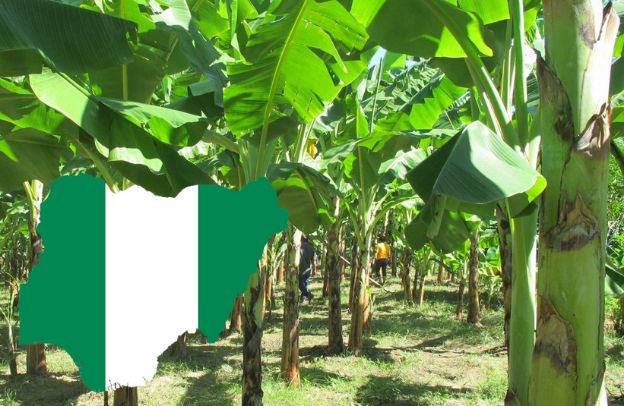From Cornfields to Cosmetics: How the African Diaspora Can Transform Nigerian Agriculture

What if a humble cornfield in Nigeria could fuel the next billion-dollar industry? What if the corn you see as food could also be the foundation for eco-friendly cosmetics that cater to a growing global demand for sustainable products? These are not distant dreams but opportunities waiting to be unlocked by forward-thinking entrepreneurs like you.
Learn How to Leverage Your Story through our Story To Asset Transformation (S.A.T) Framework.
As an African diaspora entrepreneur, you hold the key to transforming Nigerian agriculture into a hub for innovation, job creation, and economic growth. Are you ready to take the leap?
The Untapped Potential of Nigeria’s Agricultural Sector
Nigeria is home to over 200 million people and is Africa’s most populous nation. Agriculture contributes nearly 25% to the country’s GDP and employs about 70% of the rural population. Among the many crops grown, maize stands out as one of the most important.
According to the African Development Bank, the agricultural sector holds undeniable strategic importance for Nigeria’s economy. Between 2016 and 2020, its contribution to GDP consistently ranged from 24.45% to 25.70% (NBS, 2021).
Nigeria’s vast natural resources include approximately 70.8 million hectares of agricultural land spread across diverse agroecological zones, enabling the cultivation of a wide variety of crops (IFPRI, 2021).
This natural advantage is complemented by a significant domestic and regional market, an estimated 400 million people across West Africa, that Nigeria could effectively leverage through the African Continental Free Trade Agreement (AfCFTA), to which it is a signatory.
The country is also home to a robust network of small and medium-sized enterprises (SMEs) engaged in agro-processing and distribution, which play a vital role in connecting production to markets.
Furthermore, Nigeria has developed several policy frameworks and strategic documents aimed at addressing food security and environmental sustainability (Morgan & Fanzo, 2020). These elements position the agricultural sector as a cornerstone for economic transformation and regional trade expansion.
The Food and Agriculture Organization (FAO), Nigeria produces over 12 million metric tons of maize annually, making it the largest producer in Africa.
Despite this impressive output, much of Nigeria’s maize is consumed locally, with limited value-added processing. Imagine the possibilities if more entrepreneurs like you tapped into this resource to create high-value products such as corn-based cosmetics.
These products, derived from corn starch, oil, and syrup, represent a sustainable and lucrative opportunity for both local and global markets.
See also: How To Make Corn-Based Ethanol At Home
What Are Corn-Based Cosmetics?
Corn-based cosmetics are personal care products made from ingredients derived from maize. These include corn starch (used as a thickener), corn oil (a moisturizer), and corn syrup (an emulsifier). The shift towards natural and biodegradable products has made corn-based cosmetics highly desirable.
Not only are these products safe and non-toxic, but they are also sustainable, catering to the growing eco-conscious consumer base.
The global organic cosmetics market is projected to reach $54 billion by 2027, according to a United Nations Conference on Trade and Development (UNCTAD) report. By capitalizing on this trend, you can position your brand at the forefront of a booming industry.
Choosing the Right Maize Variety
To create high-quality cosmetics, selecting the right maize variety is crucial. Opt for high-yielding varieties rich in starch or oil content. For example, yellow maize varieties are excellent for oil extraction, while white maize is ideal for starch production.
Sustainable farming practices, such as crop rotation and conservation tillage, can further enhance yields while preserving soil health.
As a diaspora entrepreneur, you can collaborate with local farmers, providing them with seeds, training, and resources to adopt these practices. This not only ensures a consistent supply of raw materials but also uplifts rural communities.
Harvesting and Processing
Once the maize is harvested, it undergoes several processing stages to extract ingredients for cosmetics. Here’s how it works:
- Grinding: The corn is ground into a fine powder, increasing the surface area for further processing.
- Oil Extraction: Corn oil is extracted using cold pressing or solvent extraction techniques. This oil serves as a base for moisturizers and serums.
- Starch Separation:Corn starch, a key ingredient in powders and creams, is separated through wet milling.
The by-products from these processes, such as corn husks and distillers’ dried grains, can be repurposed as livestock feed, ensuring minimal waste.
Formulation and Production
Formulating corn-based cosmetics involves combining corn-derived ingredients with other natural components like essential oils, fragrances, and plant extracts.
For example:
- Corn starch is blended with aloe vera for soothing powders.
- Corn oil is mixed with shea butter to create nourishing creams.
- Corn syrup is used as a binding agent in shampoos and conditioners.
The production process requires specialized equipment and skilled personnel.
As an entrepreneur, you can partner with local manufacturers or set up a facility to streamline operations.
Ensuring Quality and Compliance
Testing and quality control are non-negotiable in the cosmetics industry. Each product must meet stringent safety and efficacy standards before it can be sold.
This includes:
- Dermatological testing to ensure products are non-irritating.
- Stability testing to determine shelf life.
- Compliance with global regulations, such as those set by the EU and FDA.
By investing in rigorous testing, you can build trust with consumers and position your brand as a leader in the natural cosmetics space.
Why the African Diaspora Is Key to This Transformation
The African diaspora contributes significantly to the continent’s economy through remittances, investments, and knowledge transfer.
In Nigeria alone, diaspora remittances amounted to $20.9 billion in 2022, according to the World Bank.
However, much of this money is used for consumption rather than investments that spur economic growth.
Imagine channeling these funds into agribusiness ventures like corn-based cosmetics.
Not only would this create jobs and reduce food insecurity, but it would also generate significant returns.
Research published on ResearchGate emphasizes that diaspora investments can have a transformative impact if directed toward productive sectors like agriculture and manufacturing.
A study published on ResearchGate examined the role of Nigeria’s agricultural sector in driving economic growth using a growth accounting framework and time-series data spanning 1960 to 2011.
The findings underscore agriculture’s pivotal and consistent contribution to Nigeria’s economy. Notably, a causality test revealed that agricultural growth Granger-causes GDP growth, demonstrating the sector’s influence on the broader economy, while no reverse relationship was observed.
The resilience of the agricultural sector is highlighted by its ability to recover more rapidly than other sectors from major shocks, including the civil war (1967-1970) and economic recessions (1981-1985). Among the subsectors, crop production stands out as the primary driver of agricultural growth, signaling its critical importance.
However, the study also revealed an over-reliance on crop production, with limited development and investment in other sub-sectors such as livestock, fisheries, and forestry.
To maximize agriculture’s potential as a growth engine for Nigeria’s economy, the study recommends diversifying focus and increasing efforts to develop these underutilized subsectors.
By fostering balanced growth across all agricultural subsectors, Nigeria can unlock even greater contributions from agriculture to its economic development.
Opportunities for African Diaspora Entrepreneurs
Here are some opportunities open to African diaspora entrepreneurs. Consumers are increasingly seeking sustainable and eco-friendly products. By marketing your corn-based cosmetics as natural, biodegradable, and ethically sourced, you can attract a loyal customer base both locally and internationally.
Building Local Value Chains
By sourcing raw materials from Nigerian farmers, you can reduce production costs while supporting local agriculture.
This creates a ripple effect, boosting rural incomes and strengthening the economy.
Exporting to Lucrative Markets
With proper branding and certifications, your products can compete in high-value markets such as the US, Europe, and Asia.
Highlighting your use of African ingredients and sustainable practices can be a unique selling point.
Challenges and How to Overcome Them
Securing capital for agribusiness ventures can be challenging. However, programs like the Tony Elumelu Foundation and the African Development Bank’s ENABLE Youth Program offer grants and loans to support young entrepreneurs.
- Infrastructure and Technology: Processing maize into cosmetics requires specialized equipment. Consider partnering with local tech hubs or importing machinery to bridge this gap.
- Regulatory Hurdles: Navigating international cosmetic standards can be complex. Work with regulatory consultants or join industry associations to stay compliant.
Conclusion: A Sustainable Path Forward
Corn-based cosmetics are more than just a business opportunity, they are a solution to some of Nigeria’s most pressing challenges.
By tapping into the country’s agricultural potential, you can create products that resonate with global consumers while uplifting local communities.
The future of agribusiness in Nigeria depends on bold visionaries like you.
Will you seize this opportunity and lead the charge in transforming the landscape of African agriculture?
Learn How to Leverage Your Story through our Story To Asset Transformation (S.A.T) Framework.





